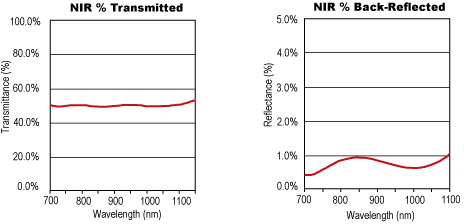
 TECHSPEC® components are designed, specified, or manufactured by Edmund Optics. Learn More
TECHSPEC® components are designed, specified, or manufactured by Edmund Optics. Learn More
| Volume Pricing | |
|---|---|
| Qty 1-5 | C$446.68 each |
| Qty 6-25 | C$400.68 each |
| Qty 26+ | C$356.16 each |
| Need More? | Request Quote |
TECHSPEC® Elliptical Plate Beamsplitters maximize beamsplitting efficiency while minimizing required mounting space. These beamsplitters are ideal for diffuse axial and in-line illumination. When oriented at 45°, the beamsplitters create a circular aperture equal to the diameter of the minor axis. TECHSPEC® Elliptical Plate Beamsplitters are available with either a visible or NIR 50% reflection/50% transmission beamsplitter coating and feature a high efficiency multi-layer anti-reflection (AR) coating to reduce back reflections. The beamsplitters are offered in either a 1 or 3mm thickness, in a range of major and minor axis measurements and wavelength ranges.

Edmund Optics offers comprehensive custom manufacturing services for optical and imaging components tailored to your specific application requirements. Whether in the prototyping phase or preparing for full-scale production, we provide flexible solutions to meet your needs. Our experienced engineers are here to assist—from concept to completion.
Our capabilities include:
Learn more about our custom manufacturing capabilities or submit an inquiry here.
or view regional numbers
QUOTE TOOL
enter stock numbers to begin
Copyright 2023, Edmund Optics Inc., 101 East Gloucester Pike, Barrington, NJ 08007-1380 USA
California Consumer Privacy Acts (CCPA): Do Not Sell or Share My Personal Information
California Transparency in Supply Chains Act
The FUTURE Depends On Optics®